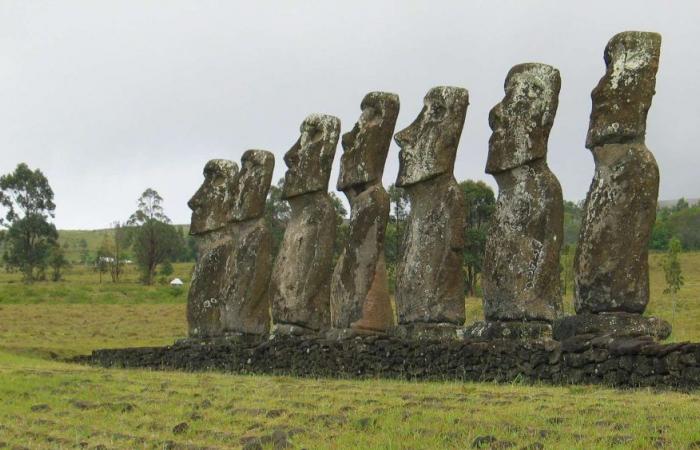Nearly 3,700 kilometers from the shores of South America, the island of Rapa Nui has been the subject of anthropological and scientific questions since the discovery of the site by European explorers in the 18th century.e century. Many gray areas remain around the arrival of the first natives, estimated at 1,000 CE. But the population would have experienced a sharp decline shortly before the arrival of the browsersbrowsers Europeans. It is said to have fallen from 16,000 to just a few thousand. However, a theory published in Science Advances June 21 questions the hypothesis of “ecocide”. Easter Island could not have experienced a sharp drop in its population because it would only have accommodated 4,000 inhabitants.
Studying the agricultural capabilities of a vanished people
Over the past five years, scientists have been aggregating satellite data, using devices that scan the landforms of Easter Island. Specifically, the academics wanted to study the distribution of rocks used inagricultureagriculture on the island. The article by Science Advances emphasizes the poverty of the soils of Rapa Nui: composed of sedimentsediments volcanic, they sometimes prove sterile in elements specific to culture. The locals then used rocks, sometimes broken, to “tame” the environment, compartmentalize crops and sometimes use the mineralsminerals contained in the rocks.
The scientists used the machine learning to identify the different uses of rocks in the context of agricultural practices among the Rapanui. The data acquired by short-wave infrared imagery (SWIR, shortwave infrared imaging) and analyzed by artificial intelligenceartificial intelligence demonstrate that agricultural structures could not have supported more than 4,000 inhabitants at a time. This observation calls into question the assertion that the small island was home to some 16,000 individuals.
No sudden decline among the Rapanui?
The figures from the study published a few days ago agree with the findings of European expeditions at the beginning of the 18th century.e century. Despite the land being difficult to cultivate, the indigenous people would not have experienced a decline in population, according to projections made by machine learning. The researchers point out, however, that the results are subject to discussion: enough to encourage the establishment of a campaign of archaeological excavations on site?
Over the following decades, however, the Rapanui people suffered a dramatic fate. During the 19th centurye century, Peruvian slavers would land on the island, kidnapping many individuals and killing a large part of the inhabitants. These events had a lasting impact on the history of the island, with the survivors having carried the stigmatastigmata of these crimes, until today.






